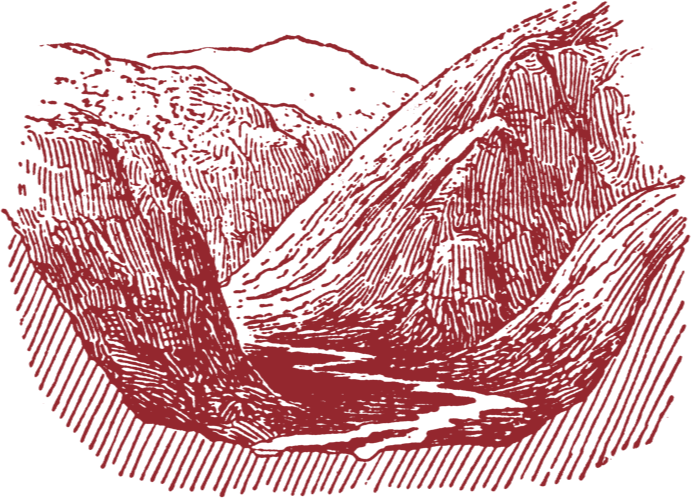The Maggia Valley is characterized by a wide valley floor with three upper side valleys (Val Rovana, Bavona and Val Lavizzara) like fingers reaching through the Alps. Seven hundred kilometres of trails form a dense network that allows you to walk through the entire Vallemaggia. In addition to hiking, you may also enjoy kayaking, bouldering, sport climbing, biking and mountain biking, canyoning, paragliding and much more.
In summer the river is a coveted destination for lazing by the warm summer sun to cool off in its fresh waters. Following the waterways of the Maggia Valley, between the rocks smoothed by water, you can find a myriad of magnificent wells from different shades of blue and some small beaches of fine sand.
Discover Vallemaggia through its "Stone paths", a series of historical-cultural itineraries that will allow you to know the magic secret of almost every village, from Avegno to Fusio and from Cevio to Bosco Gurin even with an electric bike rented at the Cristallina. The maps of the stone paths are available to our guests.
Questa bella e facile passeggiate è ideale per rimettersi in movimento nelle prime giornate di primavera.
Con i mezzi pubblici oppure con la vostra auto si raggiunge il paese di Fusio da dove si parte per l'escursione al Lago Mognola con il suo "Steinaquädukt" lungo 447 metri.
Con l'accorciarsi delle giornate vi proponiamo una splendida passeggiata sul versante solivo di Coglio della durata di 3-4 ore.
Dal nucleo di Coglio si sale subito in modo deciso fino ai rustici abbandonati di Sert, ma il comodo sentiero a tornanti rende i 300 m di dislivello meno massacrante. Si sale ancora con un dolce traverso fino al nucleo di Spin, luogo ideale per un break. Dopo Spin si esce dal bosco per camminare piacevolmente quasi in piano fra felci e betulle, fino a raggiungere i rustici di Marena, balcone su Maggia, con la croce ben visibile dal fondovalle. Da qui, con un sentierino un po' franoso si scende a incontrare il sentiero della valle del Salto, che gradino dopo gradino scende alla Cappella della Pioda e a Maggia.
Il sentiero che si snoda sul fondovalle della Val Lavizzara von tratti pianeggianti e leggere salite, costenggiando il fiume Maggia, offre l'occasione di allontanarsi per un giorno dalla vita frenetica per ritrovare la tranquillità della montagna e il piacere della scoperta: un viaggio nella natura e nella storia.
Goditi un'escursione tra i boschi su facili sentieri ben tracciati. Attraversa passaggi scavati nella roccia e maggenghi e visita una graziosa cappella votiva affrescata da Giovanni Antonio Vanoni. Poi sosta sullo splendido promontorio di Cassinella coi suoi prati falciati, i tipici rustici e la suggestiva cappellina dominata da un antico castagno. Un paesaggio idilliaco ti aspetta.
La valle di Lodano, sede di una grande riserva forestale, è un luogo attrattivo caratterizzato da un paesaggio affascinante, composto da preziose componenti naturali e arricchito da numerose testimonianze di attività antropiche tradizionali; maggiori informazioni riguardo la riserva forestale le trovate direttamente sul sito www.valledilodano.ch

The valley floor is characterized by a largely natural landscape, shaped by the Maggia River. Fine sandy beaches, large puddles, smooth stones and tumbling waterfalls are some of the treasures of this region where you can walk to discover ancient traditions or explore territories touched bustle of modern life.
Val Rovana offers vast natural areas and small scattered settlements - an enchanted region where the atmosphere is timeless. The valley's remarkable scenery begins with more than 25 km of rock face. The wonder grows as the visitor continues to the top of the alley, where every stretch of land exudes Nature's genius and passion. In Cerentino the valley branches in two. On the one side is Campo, typical calm village where many homes dating back to the eighteenth century witnessed the return of emigrants who found their luck in distant lands. On the other it climbs to Bosco Gurin, an ancient village with unique charm. The special housing in stone and wood and houses scattered in the wide meadows invite you to discover the Walser, people of the mountains par excellence.
Val Lavizzara is a true paradise for those who love nature, an open book to read full of discoveries and adventures. Lavizzara is an extensive territory, crossed by several valleys and crowned by majestic peaks among which the Tencia range is over 3'000 meters high. You can admire small villages and well-preserved centers, particularly rural buildings, churches and chapels rich in paintings; and bridges, paths and stairs that provide access to mountain pastures. In addition to its hard-working past, the valley's current initiatives include popular alpine farming products, hydroelectric power, sports and cultural projects, and interesting initiatives that welcome tourism. Do not miss the church built in Mogno by the famous Swiss architect Mario Botta.
The Bavona Valley, also called the wild valley, is marked by rock walls and a free nature where man has lived since ancient times. The Val Bavona is the steepest stony valley in the Alps. The rocky slopes, extending vertically for hundreds of meters, are the most obvious traces left by the glaciers that covered the area in ancient times. The Basodino Glacier forms the extreme point of this wide valley of wild traits.
Vallemaggia's earliest inhabitants, known for being tenacious and reserved, have left imprints on a wild and stony land. Over the centuries, a subsistence economy based on farming and pastoralism was the livelihood of people of Vallemaggia. The visitor will discover a region rich in testimonies of an ancient world, still alive in the customs of its people. Architectural gems of rare beauty evoke the devotion of the people and the fortunes of some emigrants who returned as lords.
At the beginning of the twentieth century, a railway connecting Locarno with Bignasco was opened, called Valmaggina. However, much of the valley remained isolated and for decades migration was often the only alternative to a life of sacrifices and daily efforts. The first decades after World War II were marked by a major rural exodus which led to an almost total abandonment of the most remote villages. Large hydroelectric works and especially the spread of commuter roads, stemmed the depopulation of these lands. Today the Valley is rich in authentic testimonies of an ancient world whose customs are reaffirmed by a population proud of its history.
